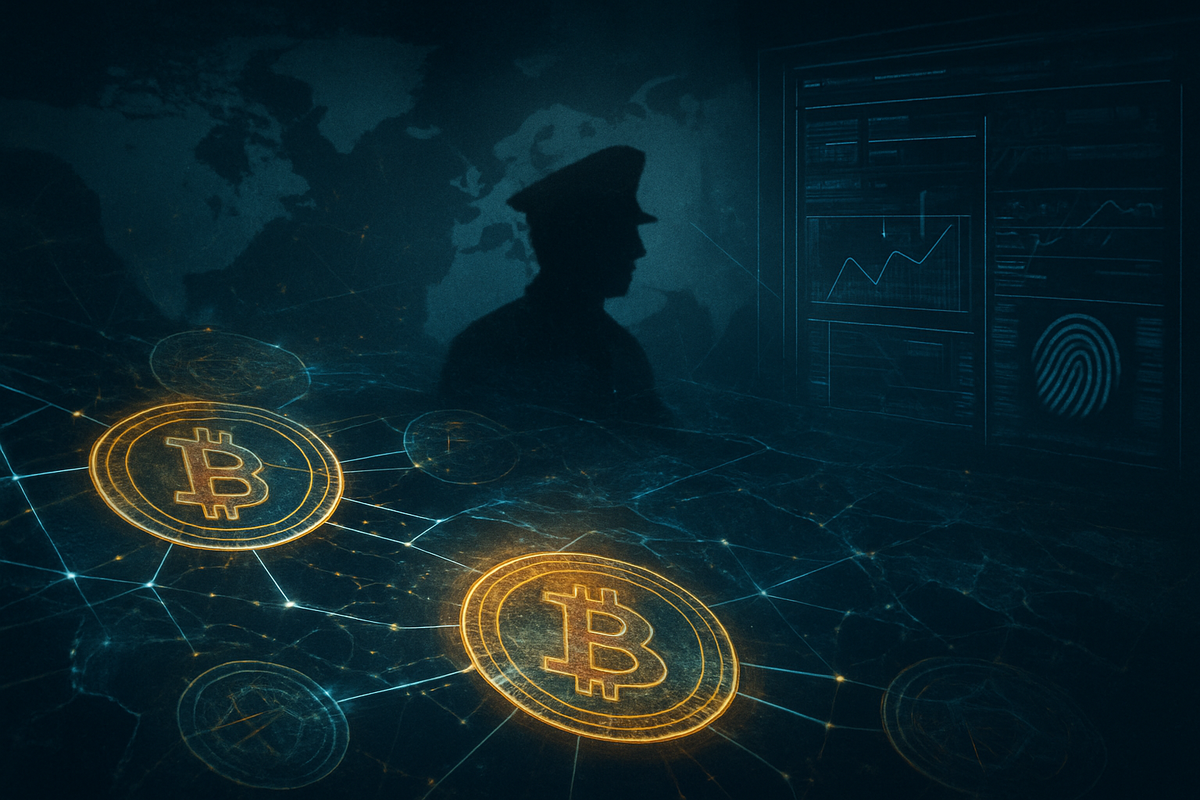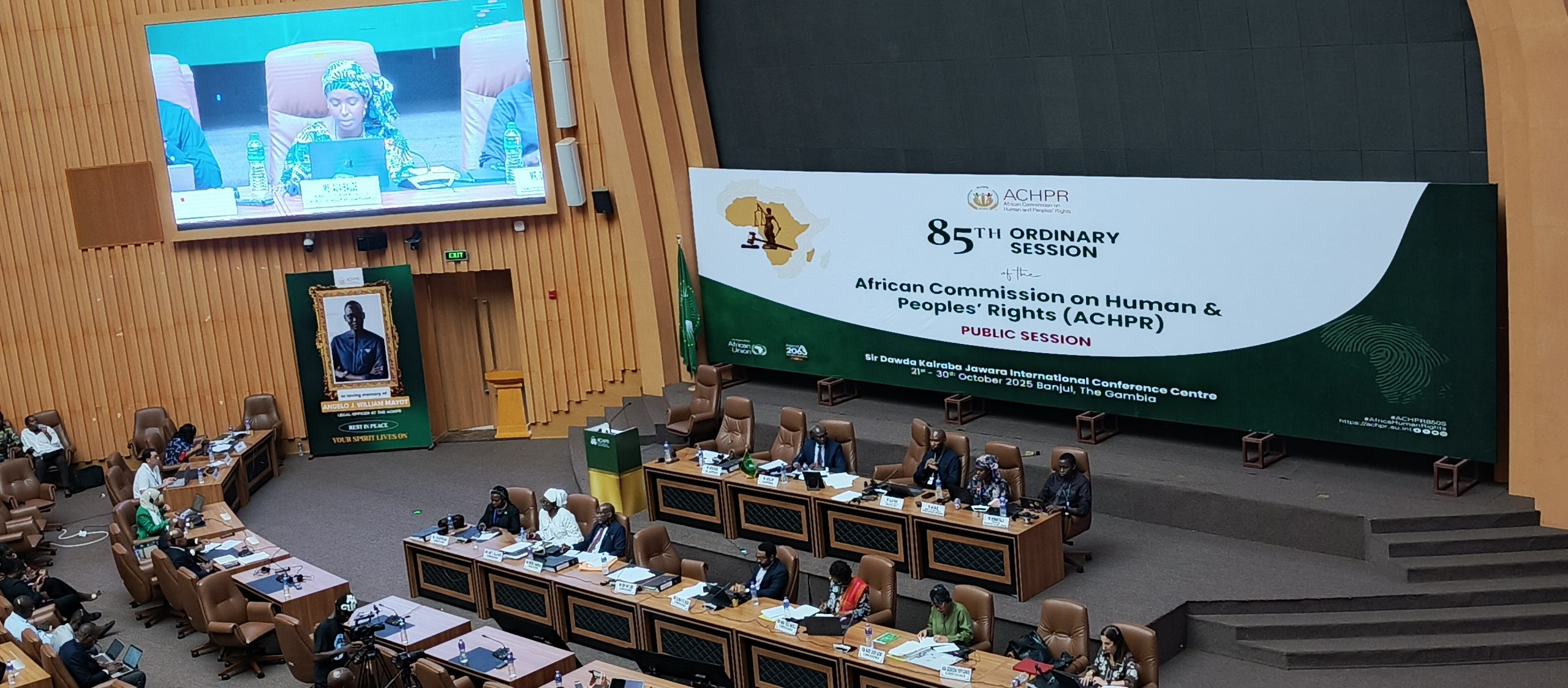FBI alerts tie together threats of cybercrime, physical violence from The Com – CyberScoop

FBI Report on “The Com” Cybercriminal Network and Implications for Sustainable Development Goals
A recent report from the Federal Bureau of Investigation (FBI) details the emergence and rapid growth of a sprawling cybercriminal collective known as “The Com.” Comprised of thousands of individuals, primarily between the ages of 11 and 25, this network poses a significant and evolving threat to public safety and global stability. The group’s activities directly undermine several United Nations Sustainable Development Goals (SDGs), particularly SDG 16 (Peace, Justice and Strong Institutions), by perpetuating violence, injustice, and the erosion of the rule of law.
Core Motivations and Criminal Activities
Primary Motivations
The FBI has identified a range of motivations driving the criminal activities of The Com’s members. These include:
- Financial gain
- Retaliation
- Ideological alignment
- Sexual gratification
- Pursuit of notoriety
Scope of Criminality and Impact on SDGs
The criminal acts attributed to The Com are diverse and severe, with profound negative impacts on societal well-being. These acts challenge the fundamental principles of several SDGs:
- Violence and Exploitation: Crimes such as swatting, physical violence, extortion, and the production of child sexual abuse material (CSAM) are a direct assault on SDG 16.2 (End abuse, exploitation, trafficking and all forms of violence against and torture of children) and SDG 3 (Good Health and Well-being).
- Gender-Based Violence: The systematic targeting of underage females for sextortion constitutes a severe violation of SDG 5 (Gender Equality), specifically Target 5.2, which aims to eliminate all forms of violence against women and girls.
- Economic Disruption: Cybercrimes including ransomware attacks and data theft disrupt businesses and critical services, hindering progress toward SDG 8 (Decent Work and Economic Growth).
Subgroup Analysis and SDG Linkages
The FBI report delineates The Com into three primary subsets, each with a distinct operational focus that correlates to specific SDG challenges.
Hacker Com
This subgroup concentrates on technical cybercrime. Its activities include distributed denial-of-service (DDoS) attacks, ransomware deployment, personally identifiable information (PII) theft, and SIM swapping. Groups like “Scattered Spider” fall into this category, targeting over 100 businesses and undermining economic stability, directly impacting SDG 8 and the resilience of infrastructure as outlined in SDG 9 (Industry, Innovation and Infrastructure).
In Real Life (IRL) Com
The IRL Com subgroup translates online conflicts into tangible, real-world violence. It offers services such as swatting-for-hire and engages in kidnapping and physical extortion. These actions create a climate of fear, directly threatening community safety and security, which are central tenets of SDG 11 (Sustainable Cities and Communities) and SDG 16.1 (Significantly reduce all forms of violence and related death rates everywhere).
Extortion Com
This subgroup systematically targets vulnerable populations, particularly underage females and children with mental health issues, some as young as nine years old. Through grooming and coercion, victims are manipulated into producing pornographic material or content depicting self-harm and animal cruelty. This predatory behavior represents a grave violation of human rights and is in direct opposition to:
- SDG 16.2: End abuse and exploitation of children.
- SDG 5: Achieve gender equality and empower all women and girls.
- SDG 3: Ensure healthy lives and promote well-being for all at all ages, which is severely compromised by the psychological trauma inflicted.
The arrest of leaders from the “764” sextortion group highlights the severity of this threat.
Recruitment and the Need for Quality Education (SDG 4)
The Com recruits impressionable youth on gaming sites and social media, indoctrinating them into a culture of criminality. This exploitation of young people underscores a critical need for enhanced digital literacy and safety education, aligning with the objectives of SDG 4 (Quality Education). Specifically, Target 4.7 calls for education that promotes a culture of peace, non-violence, and global citizenship, which is essential to building resilience against such recruitment tactics.
Law Enforcement Response and Victim Support
The FBI’s public service announcements and targeted enforcement actions, such as the arrests of key figures, are critical steps toward building stronger institutions as mandated by SDG 16. The provision of resources for victims, including the National Center for Missing and Exploited Children’s (NCMEC) CyberTipline and the FBI’s Internet Crime Complaint Center (IC3), is essential for delivering justice and providing support, reinforcing the institutional capacity to protect citizens and uphold the law.
1. Which SDGs are addressed or connected to the issues highlighted in the article?
The article discusses issues of cybercrime, physical violence, and the exploitation of vulnerable populations, particularly children and young adults. These themes directly connect to several Sustainable Development Goals (SDGs) focused on peace, justice, health, and equality.
-
SDG 16: Peace, Justice and Strong Institutions
This is the most relevant SDG, as the article centers on various forms of crime (cybercrime, extortion, physical violence), violence against children, and the response of law enforcement institutions like the FBI to combat these threats and uphold the rule of law.
-
SDG 5: Gender Equality
The article specifically mentions that a subgroup called “Extortion Com” systematically targets underage females for sextortion and exploitation. This directly relates to the goal of eliminating violence and exploitation against women and girls.
-
SDG 3: Good Health and Well-Being
The content connects to this goal by highlighting that criminals target vulnerable individuals, including “those who struggle with mental health issues,” and coerce victims into acts of “self-harm.” This underscores the impact of these crimes on the mental and physical well-being of victims.
2. What specific targets under those SDGs can be identified based on the article’s content?
Based on the specific crimes and victim profiles described, several SDG targets can be identified.
-
SDG 16: Peace, Justice and Strong Institutions
- Target 16.1: Significantly reduce all forms of violence and related death rates everywhere. The article details the emergence of the “In Real Life (IRL) Com,” a subgroup that facilitates “real world acts of violence,” including “swatting, kidnapping and physical extortion.”
- Target 16.2: End abuse, exploitation, trafficking and all forms of violence against and torture of children. This is strongly supported by the description of “Extortion Com,” which engages in “sextortion of minors, production and distribution of child sexual abuse material.” The article notes that victims are “typically between the ages of 10 and 17 years old, but the FBI has seen some victims as young as 9 years old.”
- Target 16.3: Promote the rule of law at the national and international levels and ensure equal access to justice for all. The entire article is framed around the FBI’s response to these crimes, including releasing “a trove of research,” issuing public service announcements (PSAs), and making arrests. The mention of charges against leaders of the “764” group for operating an “international child exploitation enterprise” exemplifies efforts to promote the rule of law.
- Target 16.4: By 2030, significantly reduce illicit financial and arms flows, strengthen the recovery and return of stolen assets and combat all forms of organized crime. The article describes “The Com” as a “sprawling cybercriminal network” whose motivations include “financial gain.” It mentions crimes like “cryptocurrency theft” and efforts by perpetrators to “hide financial transactions and launder money,” which are forms of illicit financial flows.
-
SDG 5: Gender Equality
- Target 5.2: Eliminate all forms of violence against all women and girls in the public and private spheres, including trafficking and sexual and other types of exploitation. The article states that the “Extortion Com” subgroup “systematically targets underage females,” manipulating and coercing them into producing pornographic material. This is a clear form of gender-based violence and sexual exploitation.
-
SDG 3: Good Health and Well-Being
- Target 3.4: By 2030, reduce by one third premature mortality from non-communicable diseases through prevention and treatment and promote mental health and well-being. The article points out that perpetrators target “vulnerable populations, including children and those who struggle with mental health issues.” Furthermore, it mentions that victims are coerced into “videos depicting… self-harm,” directly impacting their mental and physical health.
3. Are there any indicators mentioned or implied in the article that can be used to measure progress towards the identified targets?
The article mentions or implies several quantitative and qualitative indicators that can be used to track progress.
-
Indicators for SDG 16
- For Target 16.1: The article implies the use of indicators such as the number of reported incidents of swatting, kidnapping, and physical extortion linked to online groups.
- For Target 16.2: The article explicitly provides an age range for victims (“between the ages of 10 and 17 years old,” with some “as young as 9”), implying an indicator related to the proportion of children and minors who are victims of online exploitation and abuse. The arrest of leaders of the “764” group for exploiting “at least eight minor victims” serves as a specific data point.
- For Target 16.3: Progress can be measured by the number of law enforcement actions taken, such as the PSAs issued by the FBI, arrests made (e.g., the two men from the “764” group), and charges filed.
- For Target 16.4: An implied indicator is the number of organized cybercrime groups identified and prosecuted. The article identifies “The Com” and its offshoots like “Scattered Spider” and “764” as such groups.
-
Indicators for SDG 5
- For Target 5.2: The statement that “Extortion Com” “systematically targets underage females” implies an indicator tracking the number and proportion of female victims in cases of online sextortion and exploitation.
-
Indicators for SDG 3
- For Target 3.4: Implied indicators include the number of cases where victims with pre-existing mental health issues are targeted and the number of reported incidents of coerced self-harm resulting from online extortion.
4. Table of SDGs, Targets, and Indicators
| SDGs | Targets | Indicators Identified in the Article |
|---|---|---|
| SDG 16: Peace, Justice and Strong Institutions |
16.1: Reduce all forms of violence.
16.2: End abuse and exploitation of children. 16.3: Promote the rule of law and access to justice. 16.4: Combat organized crime and illicit financial flows. |
– Number of reported incidents of real-world violence (swatting, kidnapping, physical extortion).
– Age of victims of exploitation (mentions victims as young as 9, 10, and 13). – Number of public service announcements (PSAs) issued by law enforcement (FBI). – Identification of organized crime networks (“The Com,” “Scattered Spider”). |
| SDG 5: Gender Equality | 5.2: Eliminate all forms of violence against all women and girls. | – Reports of systematic targeting of underage females for sexual exploitation by groups like “Extortion Com.” |
| SDG 3: Good Health and Well-Being | 3.4: Promote mental health and well-being. | – Reports of perpetrators targeting individuals with mental health issues. – Incidents of victims being coerced into acts of self-harm. |
Source: cyberscoop.com

What is Your Reaction?
 Like
0
Like
0
 Dislike
0
Dislike
0
 Love
0
Love
0
 Funny
0
Funny
0
 Angry
0
Angry
0
 Sad
0
Sad
0
 Wow
0
Wow
0












































































